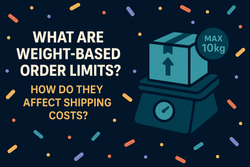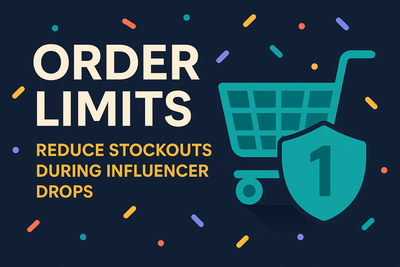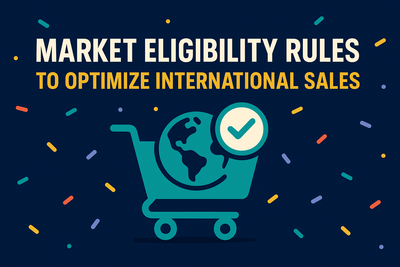Some products need a little more structure when it comes to how they’re sold. Whether you’re dealing with packaging constraints, fulfillment logistics, or just trying to encourage smarter order sizes, setting specific purchase quantities can make your store run smoother. Allowed quantities let you do just that.
What are allowed quantities and why they matter
Allowed quantity rules let you set the exact numbers a customer can choose from when buying a product. It’s different from setting a minimum, maximum or quantity increments. Instead of saying “at least 3” or “only in sets of 5”, you define an exact list such as "1, 3, 6, 10, or 15". Those are the only amounts that can be checked out. Anything else will be blocked.
This kind of control can be useful in a lot of situations. Maybe your product is always shipped in certain packs. Maybe you only want to allow customers to buy in batch sizes that make sense for your warehouse team. Maybe your business just runs better when you don’t have to handle one-off odd quantities. With allowed quantities, you can prevent those edge cases entirely.
It also helps set clear expectations. Customers aren’t guessing how many they should buy . They’re guided by the structure you’ve created. That means fewer support tickets, fewer refunds, and smoother fulfillment across the board.
Example 1
A home and garden brand sells Decorative Garden Edging Bricks that are always packed in boxes of five. If a customer tries to buy 7 or 13, it slows down fulfillment and breaks the packing workflow. To prevent that, they use allowed quantity rules to restrict purchases to 1, 3, 5, 12, 20 units. The system won’t accept anything else. That one setting keeps their shipping streamlined and helps preserve their margins.
Example 2
A premium candle shop launches seasonal gift sets in small batches. Each bundle is available in limited quantities, and they want to avoid large orders that deplete stock too quickly. To balance customer flexibility with inventory control, they set allowed quantities of 1 or 3. That’s it. Buyers still get to choose to buy a single or a set but now the brand avoids unpredictable order sizes that could throw off production or fulfillment.
Ready to create structure with allowed quantities?
Start using DC Order Limits to define exactly how your products can be purchased. Whether you're managing bundles, optimizing fulfillment, or just keeping things clean at checkout, setting allowed quantities takes the guesswork out of every order.
Install DC Order Limits on your Shopify store and try it for free with our 3-day trial.









